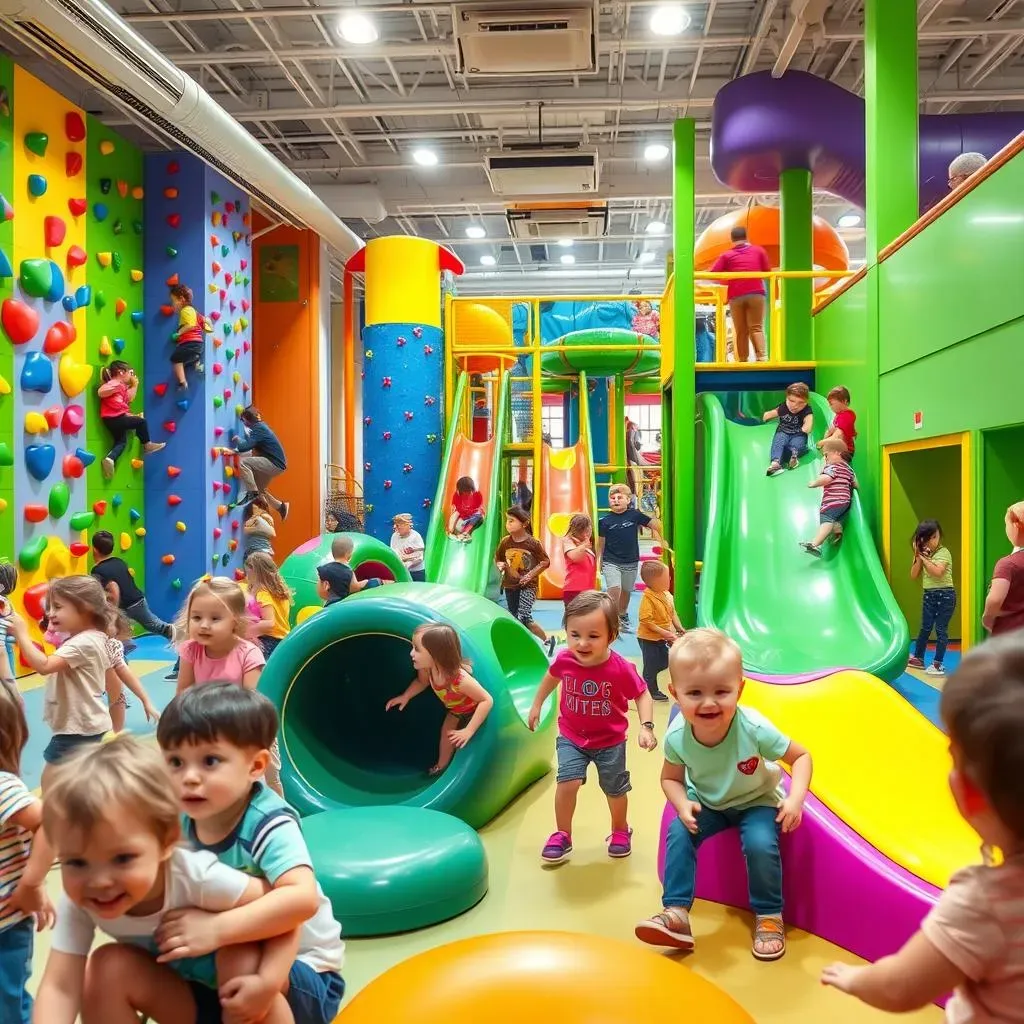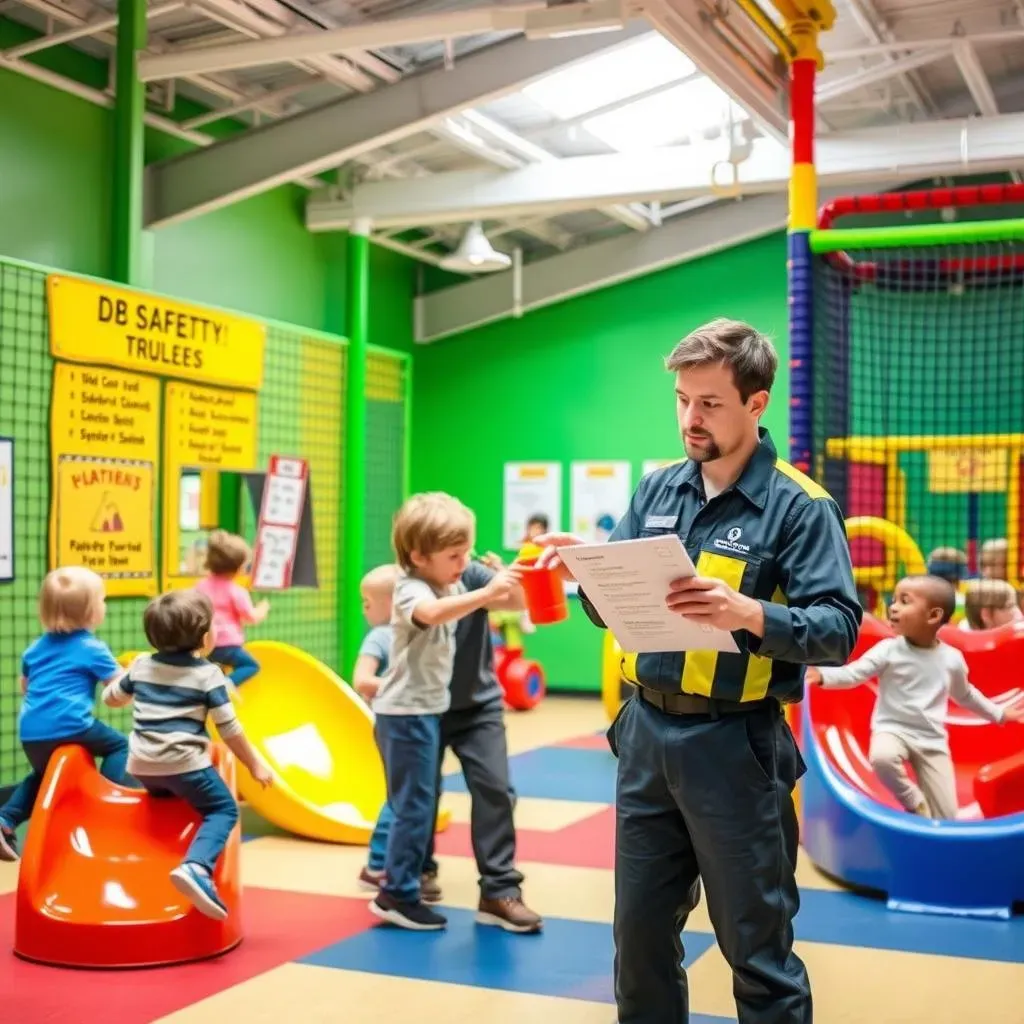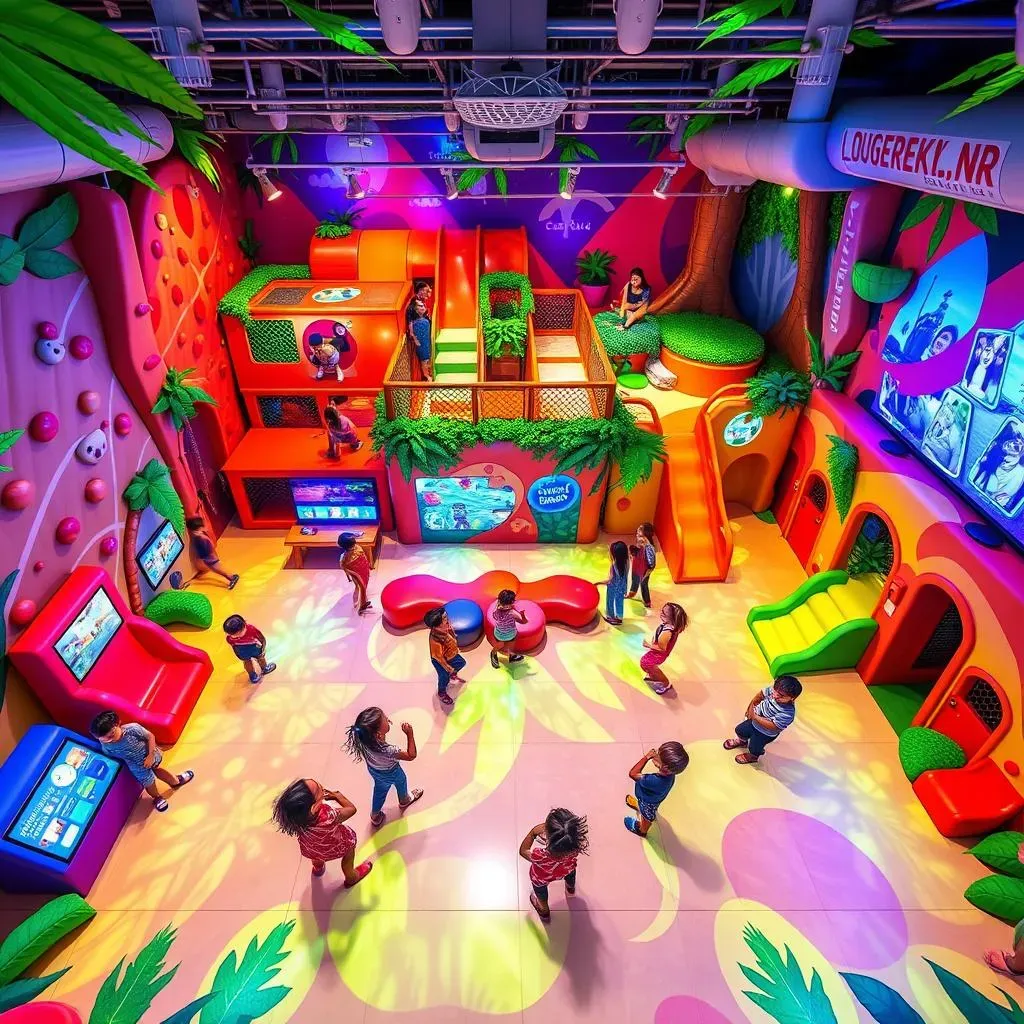Table of Contents
Looking to create a thrilling and engaging play space for kids? Look no further than interactive indoor playground equipment. These aren't your grandma's swing sets! We're talking about dynamic, stimulating environments designed to spark creativity, encourage physical activity, and promote social interaction. Whether you're outfitting a family entertainment center, daycare, or even a community space, the right interactive elements can transform an ordinary room into an extraordinary adventure zone.
Choosing the Right Interactive Indoor Playground Equipment

Choosing the Right Interactive Indoor Playground Equipment
so you're ready to dive into the world of choosing the right interactive indoor playground equipment? Awesome! First things first, think about your target age group. Are you catering to toddlers, older kids, or a mix? This will heavily influence the type of equipment you select. A toddler area will need soft, padded structures with gentle slopes and age-appropriate activities. For older children, you can incorporate more challenging elements like climbing walls, rope courses, and interactive games that test their agility and problem-solving skills. Consider the physical space and the height constraints too.
Next up, think about capacity and flow. How many kids do you anticipate having in the playground at any given time? You want to ensure there's enough space for everyone to move around comfortably and safely. Consider the layout of your space and how kids will naturally move through the playground. Create clear pathways and avoid bottlenecks. A well-designed flow will enhance the overall play experience and minimize the risk of accidents.
Durability and maintenance are crucial. Indoor playground equipment takes a beating, so invest in high-quality materials that can withstand heavy use. Look for equipment that is easy to clean and maintain. Regular cleaning is essential for hygiene and preventing the spread of germs. Check for loose bolts, worn padding, and any signs of damage on a regular basis. A little preventative maintenance can go a long way in extending the lifespan of your equipment and ensuring a safe play environment.
Factor | Considerations |
|---|---|
Age Group | Toddler-friendly vs. older children |
Capacity | Adequate space for anticipated number of users |
Durability | High-quality materials for heavy use |
Maintenance | Easy-to-clean and maintain equipment |
Finally, don't forget about the "wow" factor! You want to create a space that is visually appealing and exciting for kids. Incorporate bright colors, creative themes, and unique interactive elements that will capture their imagination. Consider adding sensory features like textured surfaces, sound effects, and lighting to enhance the overall experience. The goal is to create a playground that is not only fun and engaging but also memorable and inspiring.
Remember, choosing the right interactive indoor playground equipment is an investment in creating a space where kids can learn, grow, and have a blast! Take your time, do your research, and don't be afraid to get creative. The possibilities are endless!
Benefits of Interactive Play Equipment for Child Development

Benefits of Interactive Play Equipment for Child Development
Physical Development and Motor Skills
Interactive play equipment isn't just about fun; it's a fantastic workout for kids! Climbing, crawling, jumping, and sliding all contribute to the development of gross motor skills. These activities help children build strength, coordination, and balance. Fine motor skills also get a boost through activities like manipulating small objects, pressing buttons, and grasping ropes. Think of it as a sneaky way to get kids exercising without them even realizing it!
Beyond the basics, interactive elements can challenge kids to push their physical limits. A climbing wall, for instance, requires problem-solving and strategic movement, while a rope course demands agility and core strength. These challenges not only improve physical fitness but also build confidence and resilience.
Cognitive Skills and Problem-Solving
Interactive play equipment is a brain booster! Many elements incorporate problem-solving challenges that require kids to think critically and creatively. Whether it's figuring out how to navigate a maze, solving a puzzle to unlock a new area, or strategizing with friends to complete a team-based activity, these experiences stimulate cognitive development.
These types of activities improve memory, attention span, and decision-making skills. Interactive games often require kids to remember patterns, follow instructions, and adapt to changing circumstances. This mental workout helps them develop essential cognitive skills that will benefit them in school and beyond.
Cognitive Benefit | Example Activity |
|---|---|
Problem-Solving | Navigating a maze |
Memory | Remembering patterns in a game |
Attention Span | Following instructions for an activity |
Social and Emotional Growth
Interactive play fosters social interaction and teamwork. Many playground elements are designed for multiple children to use together, encouraging them to cooperate, communicate, and negotiate. Whether it's building a fort, playing a tag, or working together to solve a puzzle, these shared experiences help children develop crucial social skills.
Also, these activities help to build self-confidence, empathy, and emotional resilience. Overcoming challenges on the playground, whether physical or mental, gives children a sense of accomplishment and boosts their self-esteem. Learning to navigate social situations, resolve conflicts, and support their peers helps them develop empathy and build strong relationships.
Safety Standards and Maintenance for Indoor Playgrounds

Safety Standards and Maintenance for Indoor Playgrounds
Adhering to Safety Regulations
When it comes to indoor playgrounds, safety isn't just a suggestion; it's the law! Seriously, it's crucial to familiarize yourself with the relevant safety standards and regulations in your area. Organizations like ASTM International and the Consumer Product Safety Commission (CPSC) set guidelines for playground equipment design, installation, and maintenance. These standards cover everything from fall heights and impact attenuation to material safety and accessibility.
Staying compliant with these regulations isn't just about avoiding fines; it's about protecting children from potential injuries. Regular inspections, proper documentation, and adherence to maintenance schedules are essential for maintaining a safe play environment. Don't skimp on safety – it's the foundation of a successful and responsible indoor playground.
Implementing a Regular Maintenance Schedule
Think of your indoor playground equipment like a car: it needs regular maintenance to keep it running smoothly and safely. A comprehensive maintenance schedule should include daily, weekly, monthly, and annual inspections. Daily checks should focus on identifying and addressing immediate hazards like loose bolts, torn padding, or damaged equipment. Weekly and monthly inspections should involve a more thorough examination of all components, including structural integrity, wear and tear, and cleanliness.
Annual inspections should be conducted by a certified playground safety inspector. These professionals have the expertise to identify potential hazards that may not be apparent to the untrained eye. They can also provide recommendations for repairs, replacements, and upgrades to ensure your playground meets the latest safety standards. Remember, a well-maintained playground is a safe playground!
Inspection Frequency | Focus | Example Tasks |
|---|---|---|
Daily | Immediate Hazards | Check for loose bolts, torn padding |
Weekly/Monthly | Thorough Examination | Inspect structural integrity, cleanliness |
Annual | Professional Assessment | Certified safety inspector review |
Designing Your Dream Interactive Indoor Playground

Designing Your Dream Interactive Indoor Playground
Alright, so you're ready to start designing your dream interactive indoor playground? This is where the fun really begins! First, brainstorm themes. Do you want a jungle adventure, a space odyssey, an underwater wonderland, or a medieval castle? The theme will guide your equipment choices, color schemes, and overall design. Get input from your target audience – kids! – to see what themes excite them the most. Their enthusiasm will fuel your creativity.
Next, consider zoning your playground. Create distinct areas for different age groups and types of play. A toddler zone might feature soft play structures, sensory walls, and interactive panels. A zone for older children could include climbing walls, rope courses, and electronic games. A central gathering area could serve as a space for group activities and performances. Zoning helps to manage traffic flow and ensure that children of all ages have a safe and engaging play experience.
Now, let's talk about interactive elements. This is where you can really get creative and incorporate technology to enhance the play experience. Consider adding interactive projectors that display games on the floor or walls. These games can respond to children's movements, creating a dynamic and engaging experience. Interactive sound systems can add sound effects and music to different areas of the playground, further immersing children in the theme. You could even incorporate augmented reality (AR) elements that overlay digital images onto the physical play structures, creating a truly unique and immersive experience.
Don't forget about the importance of lighting and color! Lighting can dramatically impact the mood and atmosphere of your playground. Use bright, vibrant colors to create an energetic and playful environment. Incorporate colored lighting to highlight specific features or create special effects. Natural light is also a huge plus, so maximize windows and skylights whenever possible. A well-lit and colorful playground will be more inviting and stimulating for children.
Conclusion: Creating a World of Playful Discovery
Investing in interactive indoor playground equipment is more than just buying play structures; it's about creating an environment where children can thrive. By carefully considering the benefits of interactive play, prioritizing safety, and designing a space that sparks imagination, you can build a playground that fosters development, encourages social interaction, and provides endless hours of fun. So, go ahead, unleash your creativity, and build a world where kids can learn, grow, and play to their hearts' content.